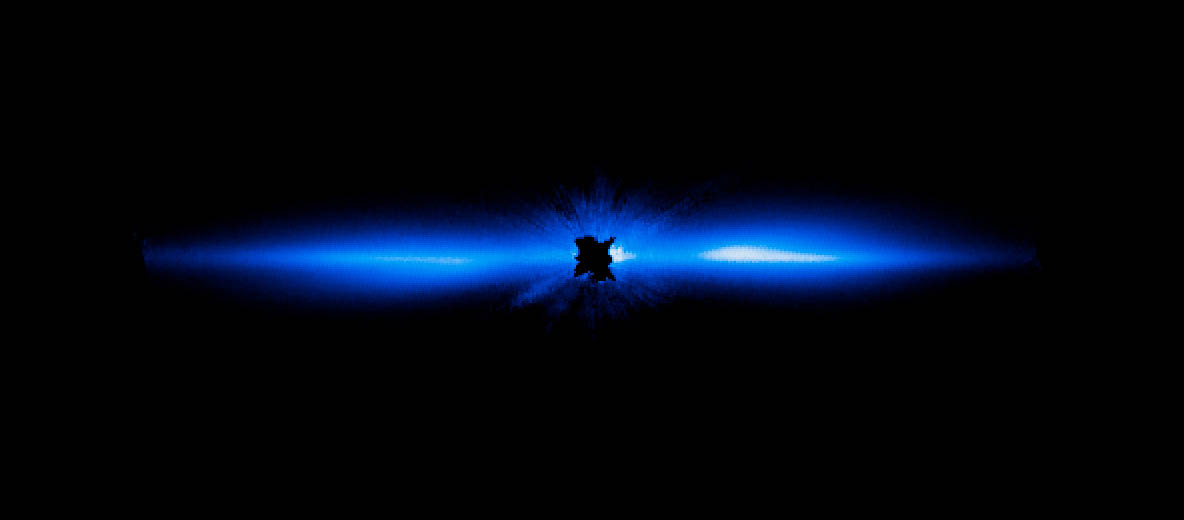A debris disk, which includes comets, asteroids, rocks of various sizes, and plenty of dust, orbits the star Beta Pictoris, which is blocked at the center of this 2012 image by a coronagraph aboard the Hubble Space Telescope. This is the visible-light view of the system. NASA’s James Webb Space Telescope will view Beta Pictoris in infrared light, both using its coronagraphs and capturing data known as spectra to allow researchers to learn significantly more about the gas and dust in the debris disk, which includes lots of smaller bodies like exocomets. (NASA, ESA, and D. Apai and G. Schneider (University of Arizona))
Home A debris disk, which includes comets, asteroids, rocks of various sizes, and plenty of dust, orbits the star Beta Pictoris, which is blocked at the center of this 2012 image by a coronagraph aboard the Hubble Space Telescope. This is the visible-light view of the system. NASA’s James Webb Space Telescope will view Beta Pictoris in infrared light, both using its coronagraphs and capturing data known as spectra to allow researchers to learn significantly more about the gas and dust in the debris disk, which includes lots of smaller bodies like exocomets. (NASA, ESA, and D. Apai and G. Schneider (University of Arizona)) A debris disk, which includes comets, asteroids, rocks of various sizes, and plenty of dust, orbits the star Beta Pictoris, which is blocked at the center of this 2012 image by a coronagraph aboard the Hubble Space Telescope. This is the visible-light view of the system. NASA’s James Webb Space Telescope will view Beta Pictoris in infrared light, both using its coronagraphs and capturing data known as spectra to allow researchers to learn significantly more about the gas and dust in the debris disk, which includes lots of smaller bodies like exocomets. (NASA, ESA, and D. Apai and G. Schneider (University of Arizona))
A debris disk, which includes comets, asteroids, rocks of various sizes, and plenty of dust, orbits the star Beta Pictoris, which is blocked at the center of this 2012 image by a coronagraph aboard the Hubble Space Telescope. This is the visible-light view of the system. NASA’s James Webb Space Telescope will view Beta Pictoris in infrared light, both using its coronagraphs and capturing data known as spectra to allow researchers to learn significantly more about the gas and dust in the debris disk, which includes lots of smaller bodies like exocomets. (NASA, ESA, and D. Apai and G. Schneider (University of Arizona))


